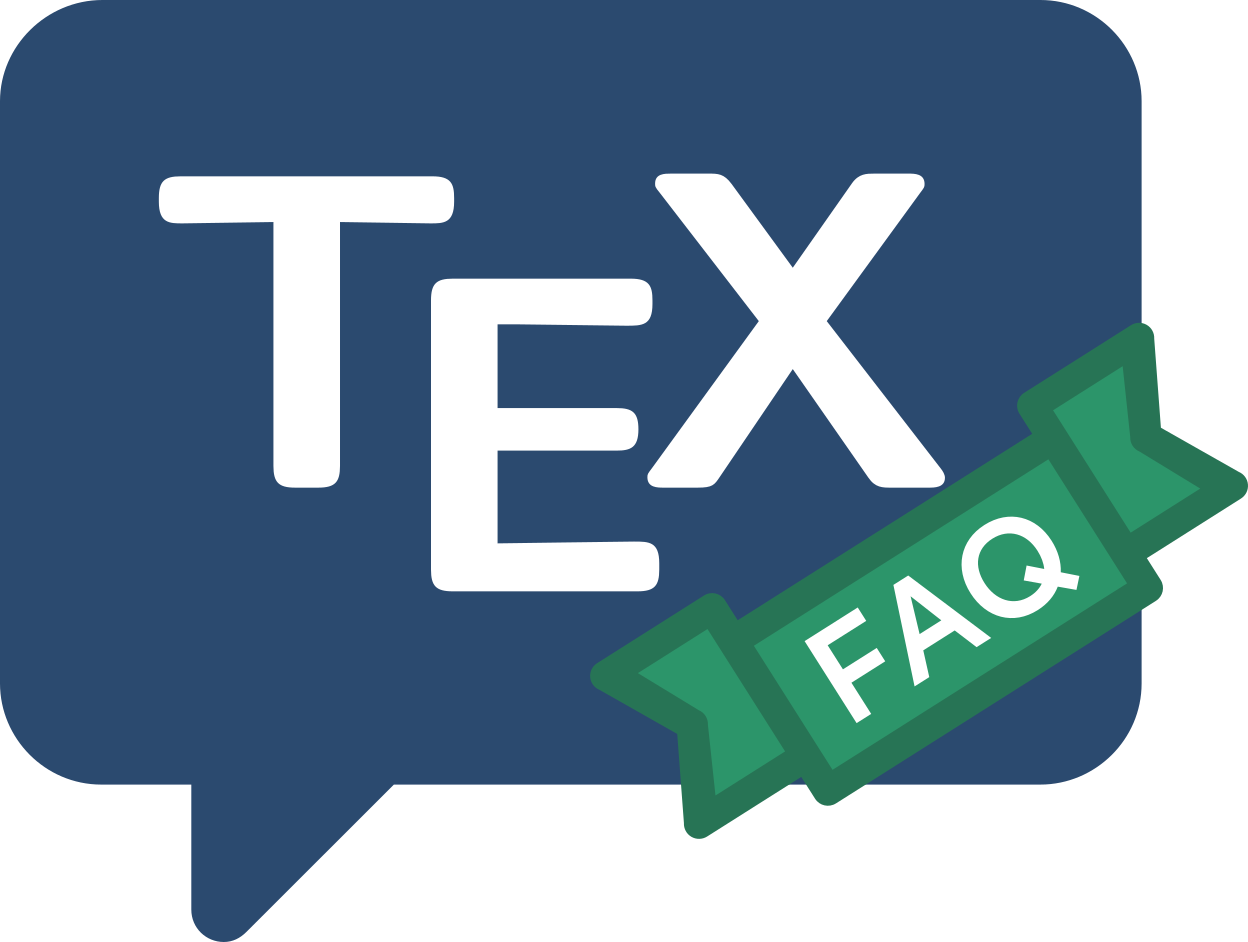
Frequently Asked Question List for TeX
Programming
More than one optional argument
If you’ve already read “breaking the 9-argument limit”. you can probably guess the “simple” solution to this problem: command relaying.
LaTeX allows commands with a single optional argument thus:
\newcommand{\blah}[1][Default]{...}
You may legally call such a command either with its optional argument
present, as
\blah[nonDefault] or without, as \blah; in the latter
case, the code of \blah will have an argument of Default.
To define a command with two optional arguments, we use the relaying technique, as follows:
\newcommand{\blah}[1][Default1]{%
\def\ArgI{{#1}}%
\BlahRelay
}
\newcommand\BlahRelay[1][Default2]{%
% the first optional argument is now in
% \ArgI
% the second is in #1
...%
}
Of course, \BlahRelay may have as many mandatory arguments as are
allowed, after allowance for the one taken up with its own
optional argument — that is, 8.
Variants of \newcommand (and friends), with names like
\newcommandtwoopt, are available in the twoopt package.
However, if you can, it’s probably better to learn to write the commands
yourself, just to see why they’re not even a good idea from the
programming point of view.
A command with two optional arguments strains the limit of what’s
sensible: obviously you can extend the technique to provide as many
optional arguments as your fevered imagination can summon. However,
see the comments on the use of the keyval package, in
“breaking the 9-argument limit”,
which offers an alternative way forward.
If you must, however, consider the optparams or
xargs packages. Optparams
provides a \optparams command that you use as an intermediate in
defining commands with up to nine optional arguments. The
documentation shows examples of commands with four optional arguments
(and this from an author who has his own key-value package!).
The xargs package uses a key-value package
(xkeyval) to define the layout of the optional
arguments. Thus
\usepackage{xargs}
...
\newcommandx{\foo}[3][1=1, 3=n]{...}
defines a command \foo that has an optional first argument
(default 1), a mandatory second argument, and an optional third
argument (default n).
An alternative approach is offered by Scott Pakin’s
newcommand program, which takes a command name and a
definition of a set of command arguments (in a fairly
readily-understood language), and emits (La)TeX macros which enable
the command to be defined. The command requires that a
Python interpreter (etc.) be installed on your computer.
FAQ ID: Q-twooptarg
Tags: latex–macros